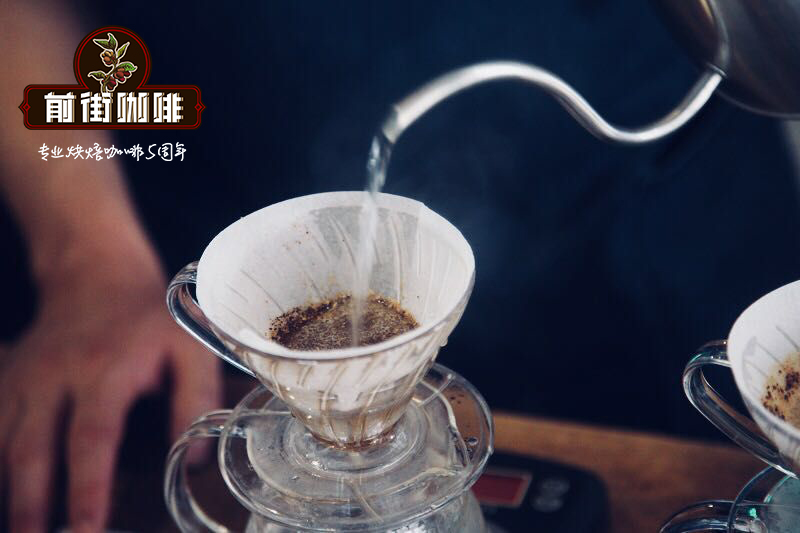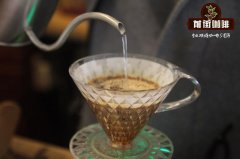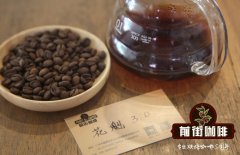How did you get the coffee from Papua New Guinea? how's the coffee from Papua New Guinea?

Professional coffee knowledge exchange more coffee bean information please follow the coffee workshop (Wechat official account cafe_style)
In 1885, the island of New Guinea became a colony for the first time, with Germany occupying the north and Britain occupying the south. At that time, the rugged, mountainous interior had not yet been mapped, and people thought it was too desolate to live in. Until 1930, an Australian prospector ventured to the eastern highlands in search of gold and found huge and fertile valleys inhabited by more than 1 million people from more than 400 different tribes. Missionaries soon poured into the area and brought the first coffee seedlings. In the 1950s, an active policy to encourage the establishment of rural coffee gardens began to be implemented. Bourbon and Blue Mountain were the first varieties to be used, and by the 1970s, more than 25000 hectares of Arabica coffee had been grown in the entire PNG Highlands.
Today, coffee is the backbone of the rural economy and the main source of income for more than 40% of the population. About 95% of the producers are small farmers, who usually have dozens to hundreds of trees in their small coffee plantations, which they grow with bananas, papayas and legumes.
The diversity of Papua New Guinea is incredible. In the fertile coffee-growing areas of the highlands, the number of villages ranges from dozens to tens of thousands. These villages speak more than 800 languages and have historically been linguistically isolated from each other. Intertribal violence is not uncommon and is still a continuing problem today. Coupled with underdeveloped infrastructure outdated machines and inconsistent processing methods this means that finding high-quality plots and sending them to the outside world can be a challenge. Papua New Guinea produces only about 1% of the world's Arabica coffee.
Coffee cups vary in shape according to different grades and regions, but generally have chocolate, tropical fruit and citrus flavors.
END
Important Notice :
前街咖啡 FrontStreet Coffee has moved to new addredd:
FrontStreet Coffee Address: 315,Donghua East Road,GuangZhou
Tel:020 38364473
- Prev

Panama Rosa Coffee Source Panama Rose Summer Why famous Panamanian Coffee Why good
Professional coffee knowledge exchange more coffee bean information Please follow the coffee workshop (Wechat official account cafe_style) Coffee production began in Panama in the 19th century, when a retired British captain met a Panamanian woman and married her. He started a farmer with coffee seeds.
- Next

The difference between sun-drying and washing flavor of Yejiaxuefei introduces the reason why coffee beans recommend Yejiaxuefei.
Professional coffee knowledge exchange more coffee bean information please follow the coffee workshop (Wechat official account cafe_style) front street-Yega Xuefei sun, washing flavor difference sharing Yega Xuefei produced in Ethiopia, Africa, is the largest producer of Arabica in Africa, but also the birthplace of coffee trees in the world, Yega producing area can be said to be one of the highest coffee producing areas in the world, coffee bean cultivation
Related
- Beginners will see the "Coffee pull flower" guide!
- What is the difference between ice blog purified milk and ordinary milk coffee?
- Why is the Philippines the largest producer of crops in Liberia?
- For coffee extraction, should the fine powder be retained?
- How does extracted espresso fill pressed powder? How much strength does it take to press the powder?
- How to make jasmine cold extract coffee? Is the jasmine + latte good?
- Will this little toy really make the coffee taste better? How does Lily Drip affect coffee extraction?
- Will the action of slapping the filter cup also affect coffee extraction?
- What's the difference between powder-to-water ratio and powder-to-liquid ratio?
- What is the Ethiopian local species? What does it have to do with Heirloom native species?

